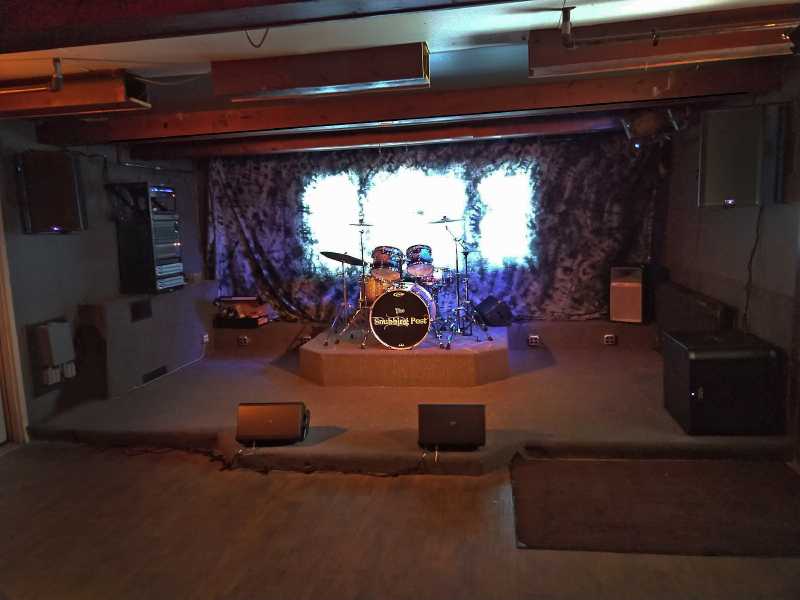Ahead Of The Game
I knew my time to work in the venue would be extremely limited so I did as much of the verification process as possible at the shop. I tested the cables, console, and loudspeakers individually before assembling and testing the entire system. My first step in loudspeaker verification was to make sure that multiple units of the same model measured the same, which helps detect blown drivers, polarity reversals, or shipping damage.
Figure 1 shows two sets of magnitude traces, with each group of loudspeakers measuring close together. Room effect is clearly visible, but that’s unimportant: emphasis is on detecting any difference between the traces, not the absolute responses.

Next up was getting the loudspeakers as close to my target tuning curve as I could, so that once they were installed, I would only have to compensate for the change in room, and hopefully reduce my tuning time. Due to the reflective shop space, I used a few spatially distributed measurements to get a clearer picture of the overall response.

There was a midrange response bump that I reduced by a few dB. I didn’t want to touch anything below about 200 Hz since the response in that range is so heavily dependent on the local environment, but I did set the onboard high-pass to 100 Hz, which is QSC’s recommendation when pairing these boxes with the KW181. After confirming that the phase response did in fact match the sub in the 63 to 125 Hz range (Figure 2), attention turned to the monitors.
I’ve learned from experience to take steps to reduce the onstage pileup from multiple wedges, especially on small stages. After evaluating several of the DSP presets, I ended up using the onboard EQ to manually create a low-frequency contour that dealt with the wedges’ LF coupling off the floor and provided sufficient LF extension to support a vocal fundamental, but no more.
Sub wash across the stage would be significant, so extended LF response would be unnecessary.
Figure 3 shows the out-of-the box response (black) versus the final EQ choice (red), where I opted to reduce the wide bump around 1 kHz. Again, there are significant room effects in play, so I considered this a good start with the recognition that I’d likely need to do some tweaking once they were installed.

I suspected that the ramp-up response above 4 kHz would sound too harsh, but again I decided to hear it in context on stage. This tuning was copied to the other wedges, then I lowered the high-pass filter a bit on the box assigned to be used as a drum monitor because drummers often ask for some bass in their monitor.





